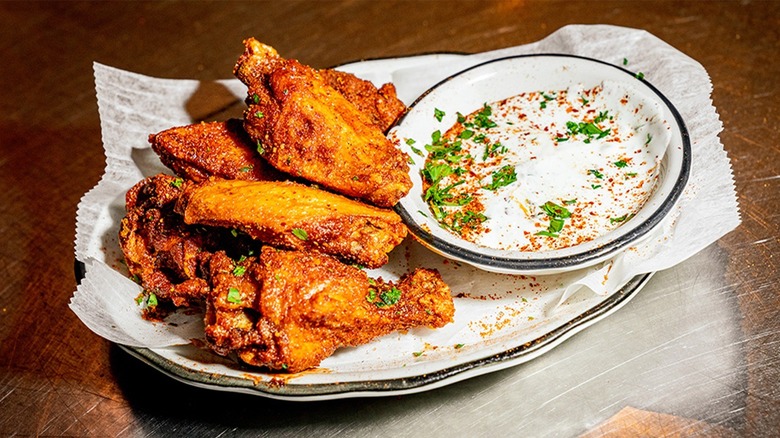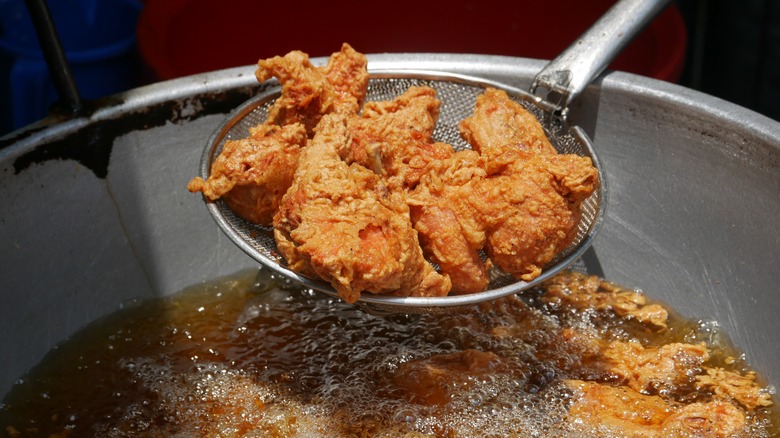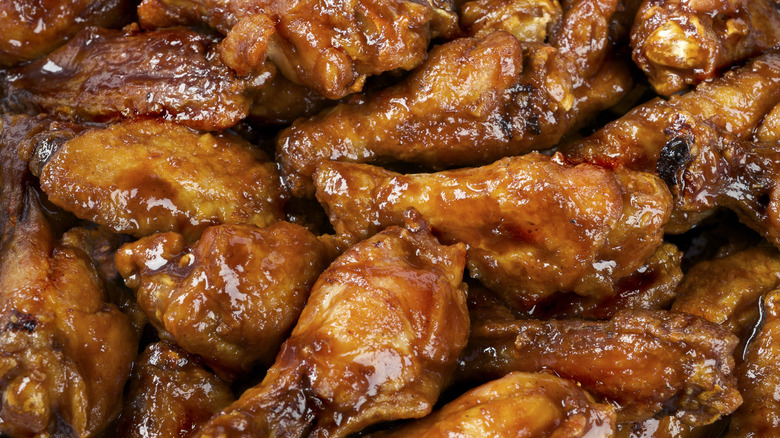A Chef Tells Us The Absolute Best Cooking Method For Chicken Wings
Whether you're munching on chicken wings for Super Bowl Sunday or enjoying them at an outdoor cookout, they're a tasty meal that satisfies salty cravings. One part of what makes this meal so good is their satisfying crunch when you bite into them. But, if you're following a chicken wings recipe at home, you might struggle to get the same crispy texture you'd find at restaurants.
Luckily, Stephen Parker, corporate executive chef at Black Tap Craft Burgers & Beer, spoke with the Daily Meal and gave some exclusive insights into how to best prep simple chicken wings to get that crackly texture. His go-to advice: "For a crispy chicken wing, the best method is a double fry."
It's not just about getting that crave-worthy crunch, either. Parker explains that this cooking method serves another purpose, too: "When you toss the wing with a sauce, the sauce sticks to the crispy skin." So, not only do you get a crunchier bite, you also get one that's more evenly coated, leading to a more consistent and tastier meal.
Get your initial cook right
To start making your wings, Stephen Parker explained that "the initial cook, depending on the size of the wing, is to fry the wing on a moderately low temperature." Now, with that said, if you're not sure what temperature to be frying chicken at, typically, you want to keep your oil temperature between 300 and 325 degrees Fahrenheit, although low-temperature frying can go as low as 250 degrees Fahrenheit. Just remember not to go too low; when your oil isn't hot enough, the wings can wind up absorbing the oil and becoming greasy.
Parker also explains that once you've finished the initial frying, you need to "let the chicken wing rest." About 15 to 20 minutes will do, and you can actually pause the process here and pop your wings into the fridge overnight. Then, you can do the double-fry up to a day later, making an easy pre-prepped meal — but be sure to bring the wings back to room temperature before the second fry. Whether you make the wings the same day or refrigerate them overnight, just don't skip the resting step. This phase helps extra water evaporate from the wings, contributing to a crunchier wing after that second fry.
Finish your wings off strong
Once your chicken has rested, it's time to chuck it back in the fryer. Stephen Parker shared that "for the final cook, finish on a higher temperature to ensure a juicy inside and a very crispy outside." An oil temperature of between 350 and 400 degrees Fahrenheit should do the trick here. Remember, the temperature of the oil will drop when you add your chicken wings, so bear this in mind when trying to get the perfect cooking heat range.
Now, the key here is that since you're heating the oil up more, you don't want to leave the wings in it for too long. Otherwise, you run the risk of them charring on the outside and becoming tough on the inside. To keep that juicy interior and get a crispy exterior, you only need to fry your wings for a few minutes. Keep an eye on them, and once they're golden brown, it's time to take them out of the oil and let them rest before slathering them in sauce. With these expert tips, you can now make a tasty platter of the crunchiest chicken wings ever!


